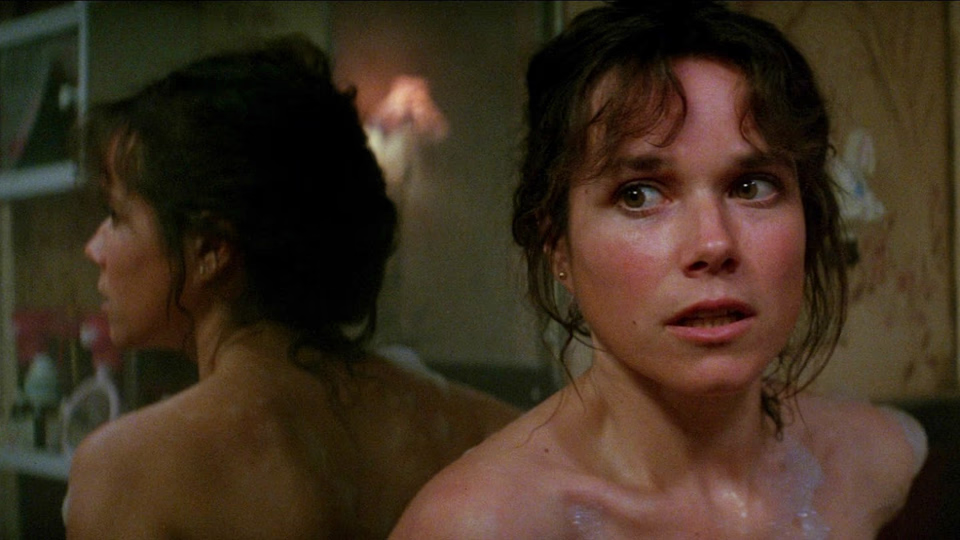The Entity

Barbara Hershey plays a single mother who finds herself under repeated, violent sexual assault from an unseen force in The Entity.
Hershey turns in a fearless performance. Several scenes see her in various states of undress under violent sexual assault from an invisible attacker. Hershey sells these attacks through pure craft, communicating volumes with her eyes, groans, and body language. Far more than a scream-queen performance, her vulnerability makes the scenes grueling.
For its first two acts, the film offers a harrowing metaphor for domestic abuse. Director Sidney Furie leans on two-shots and closeups. These, combined with the small rooms of Hershey’s modest home, lend a documentary feel, helping ground the supernatural elements. As the attacks escalate, Furie proffers a subtle increase in Dutch angles and other dynamic techniques to mirror her unstable reality. Hershey is alone. Everywhere she turns for help, she finds men eager to dismiss, manipulate, or abandon her.
First, her psychiatrist. After Hershey explains her predicament—an uncomfortable sequence that borders on confessional—he says, before he can help, “We have to find out what the problem is.” Ron Silver shines in the part, conveying reams with his regretful tone masking a skeptical condescension.
When another assault leaves her covered in bruises and bite marks, Silver has Hershey explain herself to his fellow clinicians. In a crowded, smoke-filled room, she endures questions from old men sporting more skeptical stares. After she leaves, they ignore the physical evidence and focus on her sexual history.
Exasperated, she turns to a group of parapsychologists. Sensing a means to advance their careers, they approach Hershey after an attack. Her mostly-absent father-figure-boyfriend has just left her, spooked by what’s he’s seen. Feigning concern, the parapsychologists say, “Maybe this doesn’t seem like the best time for this, but we’re afraid for you.” They then propose a dangerous experiment that treats her as a guinea pig.
To everyone else, she’s as much an inhuman “entity” as the force attacking her.
These elements almost overcome a dismal third act that sees Hershey fleeing laser beams and a cheap optical effect involving a giant ice block. It’s as though screenwriter Frank De Felitta—who adapted his own novel—grafted on the end of a B-grade science-fiction picture. According to Daniel Kremer, author of Sidney J. Furie: Life and Films, Furie regretted the ending.1 Hershey called it contrived.2 Even editor Frank Urioste disliked it.3
It’s a fatal flaw. I can admire Hershey’s performance and Furie’s direction and still admit the ending stinks. Directorial style and convincing performances can’t overcome an aborted script. Abandoning the first two acts’ intimate, character-driven approach opens the door for critics to paint the film as misogynistic exploitation reveling in Hershey’s graphic sexual assaults.
I don’t agree, but the stylistic devolution leaves one doubting the prior acts’ sincerity. When your ghost goes from a stand-in for domestic abuse to shooting lasers you’ve lost the metaphor. Disappointing given the film could have joined Rosemary’s Baby in the social discourse on women’s rights.